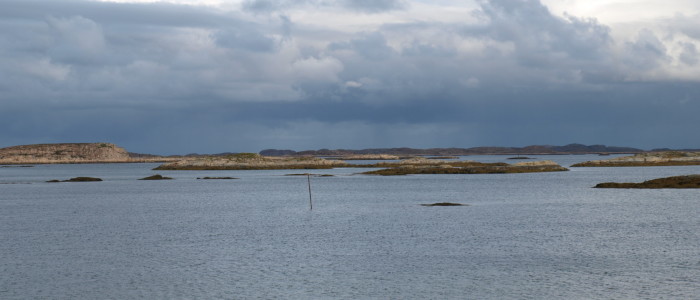The environment, on a worldwide basis, is based on a very complicated combination of effects from the far and near surroundings, Mother Earth itself, and not least the actions of humans on earth. No wonder, the effects that have been monitored for so long indicate that it is time to act; the countless natural catastrophes seem to pile up and people in and outside the scientific community seem to agree that something needs to be done.
However, the good news is that climate and environment is back on the agenda, long overdue. Most people are aware of the increasing temperatures worldwide. Most people also seem to agree that the main reason is the increasing emission of human- made greenhouse gasses. However, few people seem to know what the best course of actions is to reduce the volume of these gases, and who must reduce the most. Nevertheless, the decision- makers seem to be aware of this hugely important environmental issue.
Since the fifth IPCC report in 2013 something has changed. The UN has carried out the Climate Summit 2014 with participants from most of the world’s leaders, the European Union (EU) has set concrete goals for the reduction of the emission for their member states. The USA and China are so far willingly stepping up their efforts, and with them behind these goals, there is hope for a more active contribution from countries worldwide.
The last large climate conference, COP 21 (Twentieth session of the Conference of the Parties), held in Paris in November/December 2015, set clear goals about the reduction of the emissions. Hopefully, this will be the start of a new trend in the climate discussion, a discussion where concrete results will be the goal. The two-degree goal (+20C) has until now been the main goal, but now the ambitions are maximum 1.5 degree increasing in the world’s temperature, based on the temperatures before the industrial revolution.
The science foundation for COP 21 is based on climate data sampled in different ways, from sensors on the ground, in the oceans and in the atmosphere, but very much is also based on data sampled by sensors in space. For close to sixty years, earth observation satellites have provided and still provide us with regularly updated global reviews that no other system can provide.
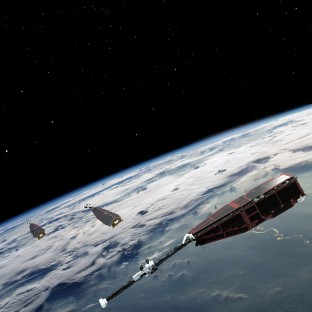
Swarm – one of the Explorer satellites detect the earth’s magnetic fields with large accuracy. Credit: ESA
However, sensors are useful in more ways than one. Sensors can detect nearly everything that happens, not only on the surface on earth, but also within the crust and in the atmosphere and not least, they contribute to an increasing knowledge. Of European satellites, one ought to mention the GOCE, which measures details in the earth’s gravity, SMOS for global observation of the salinity over the oceans and soil moisture over land, Cryosat for ice monitoring, Swarm measure the magnetic signals from magnetosphere , ionosphere, earth’s core, mantle, crust and the oceans. ADM-Aeolus acquire profiles of the wind on a global scale, Earthcare is ESA’s cloud and aerosol mission, Biomass will provide information about the state, and the changes in Earth’s biomass, and provisionally the last, FLEX will improve our understanding of the way carbon moves between plants and the atmosphere and how photosynthesis affects the carbon and water cycles. Data from our own satellites have also been completed with data from other nations’ satellites, named “Third Party Missions”.
The main scientific task for all these satellites is to increase our knowledge about earth and the surroundings. Together, they have all provided the science community and politicians with a more complete picture of what happens on earth and in the surroundings.
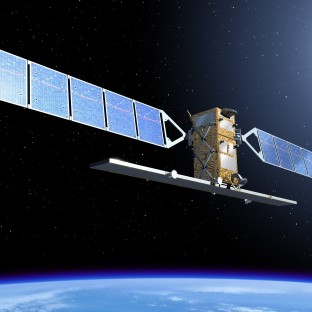
Sentinel 1 – the first of the European Earth Watch satellites. Credit: ESA
The next European satellite types are the operational Sentinel satellites aimed at regularly monitoring earth. The first satellite is operative; some are in the building phase and the last in the design phase.
Meteorological satellites are also a part of this picture. Originally, they contribute to a large degree with historical and climate data. The next generation of these satellites will also be platforms for the two last Sentinel sensors.
Today, many countries have environmental- and climate sensors in space. The USA was the first country to imitate such usage, and for a long time they were the sole operator, however, Europe has now taken over that role.
As a part of the European community, the Nordic countries are active users of the satellite data, firstly in terms of gathering appropriate knowledge, furthermore, in order to manage the large oceans and arctic areas the countries are responsible for. As large users, they also need new ideas and continuously new and better data to achieve an increasing knowledge and for better monitoring.
The following articles in this series will therefore point at satellites as the ultimate tool for more knowledge about improved monitoring of the environment and climate, focusing this time on the Nordic countries.
For further reading
As an introduction to the topic “Satellites – the Ultimate Tool” it may be wise to take a closer look at the state of the earth today, simultanously thinking ahead, wondering what earth will look like and what state it will be in twenty years from now and onwards. The following articles; “Our Changing Earth” and “Scenarios for 2035”, will look closely into these matters, all topics based on reports from ESA/CEOS 2012 and NASA 2015.
Our Changing Earth
The Earth is very isolated in the Universe. All our resources are gathered on Earth and there are no usable resources to be supplied from the rest of the Universe. Shrinking resources and a damaged environment can hardly be restored, and we cannot simply run away to another planet. We must take full responsibility of our resources and environment if new generations shall continue to live on the “Blue Planet”.
Our environment and climate are changing, that is indisputable. The question is,, are the changes human made or based on natural changes, and are the changes permanent
The most commonly accepted statements are:
- Most of the changes are human made;
- The changes will increase and become permanent, if the necessary initiatives are not being taken almost immediately.
The first United Nations Conference on Sustainable Development, the Rio Earth Summit in 1992, was by many regarded as the start of the work to formulate an international climate agreement about protecting of the world’s environment. The conference was hailed as a milestone in climate treaties, and resulted in several treaties on climate change, biodiversity and desertification.
Twenty years later, in connection with the Rio+20 Earth Summit Committee on Earth Observation Satellites, (CEOS) and European Space Agency (ESA) published a handbook for the conference, introducing the possibilities satellites may provide monitoring the situation, as well as stating how they can be used to obtain more knowledge. However, the handbook gave also a survey of the evolution on Earth the last twenty years.
At present, nearly four years after the Rio+20, the environmental trends have not changed particularly much.
The first part of this article is based on this report and will show how human activity on Earth has changed over the twenty years since the Rio conference in 1992. The last part is based on the prognosis carried out bythe American National Oceanic and Atmospheric Administration, NOAA, in connection with their “Next Generation Strategic Plan” in 2010 and shows the prognosis for the next twenty years.
Environmental Trends Since Rio 92
Over the last two centuries, both the human population and the economic wealth of the Earth has grown rapidly. These two factors have increased resource consumption significantly and have also increased the stress on the environment. The population has grown from 4,5 to 7 billion people, an extraordinary increase in relation to previous centuries.
The world has also become much smaller, in terms of modern communication related to transport or information. Travelling to far and exotic places is no longer reserved special groups of people, whereas in the past it was almost conclusively reserved the wealthy. The same has happened with the information. The daily news is a global bulletin; we communicate with and receive information from all parts of the world, in near real time. .
We have cut from the report “The Earth Observation Handbook 2012. Special Edition for Rio +20”.
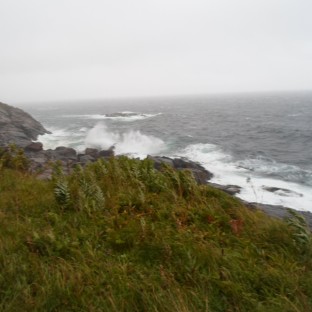
The future climate in the Nordic areas will be warmer, weter and wilder. Oter areas of the world can be warmer and dryer.
Evidence compiled for the Rio+20 debates identifies key global trends of relevance for the Earth Summit, focusing on causes and effects and on the twenty year of change since 1992:
- Increasingly, the world’s population are urban dwellers, with more than half now living in cities. These people account for 75% of global energy and 80% of global carbon emissions;
- Globally, CO2 emissions increased by 36% between 1992 and 2008, from around 22 billions tonnes to over 30 billion tonnes. Emission has accelerated in the most recent years, due to the economic growth and significant investment in infrastructure and manufacturing in the largest developing countries. Eighty percent of global CO2 emission are generated by just 19countries – mainly those with high levels of economic development and/or large populations. The energy, industry/manufacturing and forestry sectors together account for over 60% of all greenhouse gas emission;
- Aviation is estimated to be responsible for 5% of the global emission of greenhouse gases: 2.27 billon passenger trip were undertaken in 2009, up 100% since 1992, and the air freight (tonnes/km) is up 230 % over the same period;
- Since 1992, the overall Gross Domestic Product (GDP) has increased by 75 %. Pr capita CDP rose by 40%, and up to 80 in developing countries;
- The last two decades will be remembered as the era of globalisation of trade, during with internationally traded products have triplet;
- Global dietary pattern have changed enormously over the last two decades. Income grown and shifts in consumer preferences have altered dietary patterns, particularly in developing countries. Average meat consumption (with accounts for 18-25% of the world’s greenhouse gas emission) grown from 34 kg to 43 kg per person per year.
What are the consequences?
That the economic growth the last decades has enormous consequences for our planet is indisputable CO2 stored in the underground through millions of year have been released in through burning of oil, gas and coal. The consequences are an increasing amount of CO2 in the atmosphere and greenhouse gas concentrations in the atmosphere, a much higher level than the previous millennium.
Human activities have transformed almost a half of the Earth’s surface from nature to several types of degraded area, with large consequences for biodiversity and climate. Land degradation and desertification is also a threat to the food supply and security. The global community is estimated to lose 12 million hectares, 1200 km2 of productive land every year, an area that is 4 times the area of Norway. For the biodiversity it is of great concern that tropical forests have been reduced with 50% It is indicated that 1600 km2 have been converted to other use every year the last two decades. Much of that is converted in to cultivated ground to compensate for loss of ground other places. Deforestation is a significant contributor to CO2 emissions, estimated to around 17% of the global total.
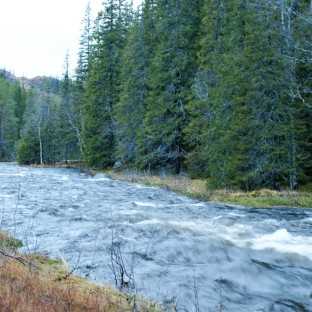
Fresh water will be a limit resource for larger parts of the world.
Fresh water is also a limited resource for many areas and uncritical use of irrigation and personal use has lowered the level of the ground water in many areas. More than half of all accessible freshwater is used directly or indirectly by humankind.
Nearly all mountain glaciers around the world are retreating and getting thinner. Approximately one sixth of the world’s population is dependent on glaciers’ ice and seasonal snow for their water resources.
Shrinking ice in the mountains and in the polar areas is also one of the reasons for an increasing ocean level. The other reason is the increasingly higher water temperatures. Higher ocean level is a hot, not only for people who live in small islands worldwide, but also for the large part of the world’s people who live in the coastal areas.
Source; The Earth Observation Handbook 2012. Special Edition for Rio+20.
Read the whole handbook. www.eohandbook.com
Scenarios For 2035.
What Will the World be like in Twenty Years?
In preparation for the “Next Generation Strategic Plan” in 2010, NOAA has started thinking of what the world, and specifically the USA, could be like in 2035. Through several workshops, a multi-disciplinary team identified approximately 200 major forces and trends that could affect NOAA’s future through 2035.
The team came up with three plausible and possible scenarios; however, they offered no indication of what scenario is most likely for 2035; only time will tell. The three scenarios are as follows; “Too little, too late?”, “Green Chaos” and “Carbon Junkies”.
The first scenario is much like today’s situation; the politicians and decision makers “sit on the fence” in spite of clear indications that the climate changes we experience seem to be created by humans. Green Chaos is the ideal situation. The society has taken climate and environment seriously, binding agreements have been signed, the emissions and the climate are stabilized. The last scenario is the worst imaginable. The emissions continue to increase, the oceans may rise close to ten centimetres, the Arctic and Antarctic ice are constantly shrinking and migration from increasingly more uninhabitable areas is increasing.
What to Expect?
What will happen if the society continues to be blind to the environmental challenges, or put differently, is it too little and too late?
Our world has limited resources, and resources from other bodies in the universe are an illusion. In addition, our civilisation can only survive with the right use and right distribution of the limited resources found on our earth. The largest threat to our civilization is over consumption of resources, and the emission and pollution the consumption bring about. Sadly, continuing as if nothing has happened is an illusion; however, most likely nothing much will change in the next decades.
Demographics
Nearly unaffected by other trends, the world’s population will continuously increase towards 2035. Most of the increase will occur in the East, with nearly 22 percent, while the European countries are expected to have an increase of about 3-4 percent. The population growth of the rest of the world is considered to be somewhere between these two extreme Points.
India is expected to surpass China, in terms of being the world’s most populous country. The high increase is a further threat to already limited resources. Several population reduction programs have previously been initiated with limited results. The best program seems to be knowledge, education work and social safety; all factors that can be influenced by the authorities and the people themselves.
Carbon Emission
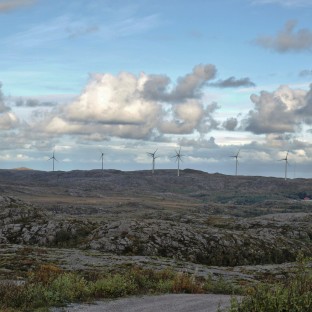
Windmile park along the Norwegian coast, one of the solutions?
Our world has still large resources of fossil energy in the form of coal, oil and gas, but further use of these resources cause the emission that threatens our civilisation. If the society continues to do too little and too late, the worldwide Giga ton Carbon (GtC) per year emission will increase from 27 in 2008 to 37 in 2035. In the worst-case scenario, the emission may reach a top of 40 GtC, and be increasing, while the best-case scenario may have an emission of only 32 GtC and be decreasing.
Pollution
High consumption also causes a lot of rubbish and pollution. Recycling has become a huge success in the industrial counties, and much of the reason seems to be that rubbish is so visible, this easier to keep in mind and do something about. However, the rubbish landfills worldwide will increase for many years to come and will contribute to the emissions in the form of methane.
Clean Water
Generally speaking, accessible water resources are shrinking and are already now a scarcity in several areas with large consumption and with limited possibilities for increasingly natural supplies. Areas with problems of supplies will increase, and this can only be compensated by reducing consumption, better cleaning technology and separation between drinking water and other usage of water. Regions with drought conditions will increase in all scenarios.
Coastal Population
The coastal population around the world will grow more than the general population, however, the population is very vulnerable to higher ocean levels, severe storms and storm surges, shown with the hurricanes Karina and Sandy in the USA and catastrophic typhoons in the Far East. The migration will increase.
Food Demand and Supply
Demand for food worldwide grows by 50% because of world population growth, rising affluence and shifting to western dietary. In the Too Little Too Late and Green Chaos scenarios, sufficient food will be accessible, but for Carbon Junkies the food supply may be critical because large areas more frequently will be hit by drought or other fatal climatic events.
Land and Sea Ice
The Earth’s total icecap will continue to decrease, both in the polar areas and in the glaziers world wide. That will contribute to more ice-free oceans, higher sea level, and possible increasing transport north of Canada and Russia, all factors that influence the climate in a negative way.
Reference: Scenarios for 2035: Long-term trends, challenges and uncertainties facing NOAA.


